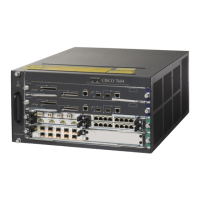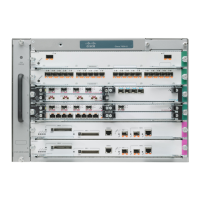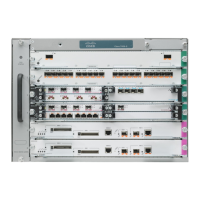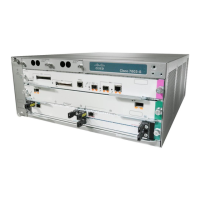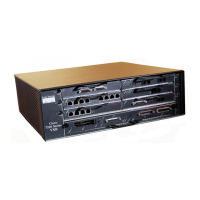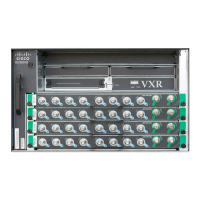35-5
Cisco 7600 Series Router Cisco IOS Software Configuration Guide—12.1E
78-14064-04
Chapter 35 Configuring Web Cache Services Using WCCP
Understanding WCCP
The multicast option is easier to configure because you need only specify a single address on each cache
engine. This option also allows you to add and remove routers from a service group dynamically, without
needing to reconfigure the cache engines with a different list of addresses each time.
The following sequence of events details how WCCPv2 configuration works:
1. Each cache engine is configured with a list of routers.
2. Each cache engine announces its presence and a list of all routers with which it has established
communications. The routers reply with their view (list) of cache engines in the group.
3. Once the view is consistent across all cache engines in the cluster, one cache engine is designated
as the lead and sets the policy that the routers need to deploy in redirecting packets.
The following sections describe how to configure WCCPv2 on routers so they may participate in a
service group.
WCCPv2 Features
These sections describe WCCPv2 features:
• Support for Non-HTTP Services
• Support for Multiple Routers
• MD5 Security
• Web Cache Packet Return
• Load Distribution
Support for Non-HTTP Services
WCCPv2 allows redirection of traffic other than HTTP (TCP port 80 traffic), including a variety of UDP
and TCP traffic. WCCPv1 supported the redirection of HTTP (TCP port 80) traffic only. WCCPv2
supports the redirection of packets intended for other ports, including those used for proxy-web cache
handling, File Transfer Protocol (FTP) caching, FTP proxy handling, web caching for ports other than
80, and real audio, video, and telephony applications.
To accommodate the various types of services available, WCCPv2 introduces the concept of multiple
service groups. Service information is specified in the WCCP configuration commands using dynamic
services identification numbers (such as “98”) or a predefined service keywords (such as “web-cache”).
This information is used to validate that service group members are all using or providing the same
service.
The cache engines in service group specify traffic to be redirected by protocol (TCP or UDP) and port
(source or destination). Each service group has a priority status assigned to it. Packets are matched
against service groups in priority order.
Support for Multiple Routers
WCCPv2 allows multiple routers to be attached to a cluster of cache engines. The use of multiple routers
in a service group allows for redundancy, interface aggregation, and distribution of the redirection load.

